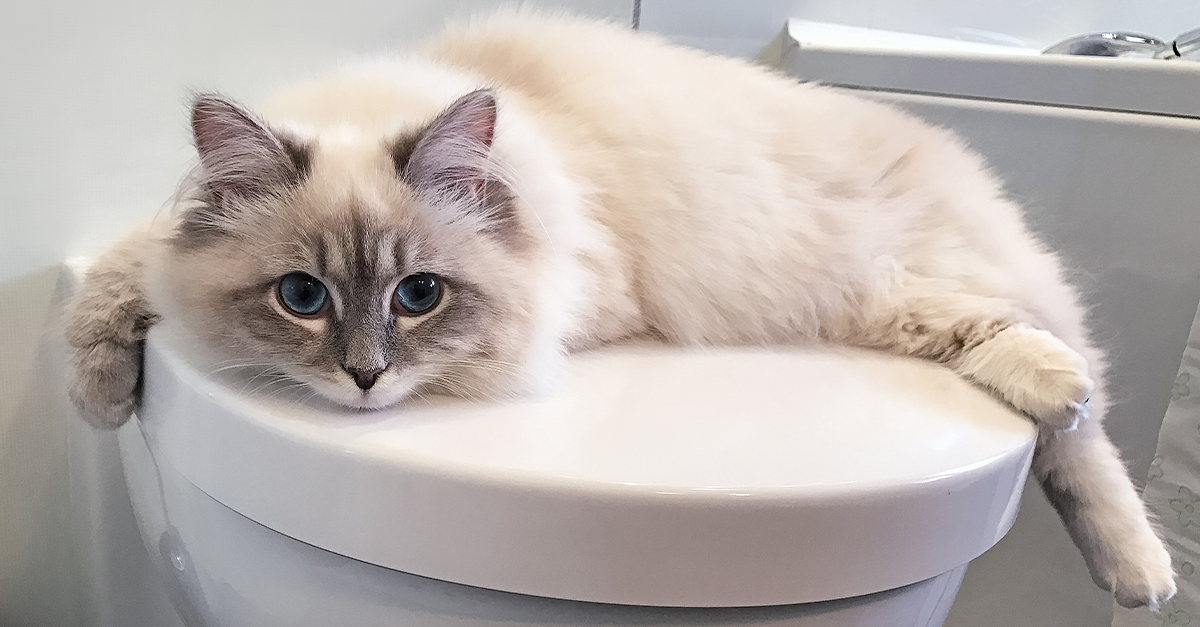Don't Flush Cat Poop Down Your Toilet - Maintain Your House's Pipe System
Don't Flush Cat Poop Down Your Toilet - Maintain Your House's Pipe System
Blog Article
Just how do you feel when it comes to Can You Flush Cat Poo or Litter Down the Toilet??

Intro
As feline proprietors, it's vital to bear in mind how we deal with our feline buddies' waste. While it may seem hassle-free to purge feline poop down the toilet, this technique can have destructive effects for both the atmosphere and human wellness.
Alternatives to Flushing
Luckily, there are safer and extra accountable means to throw away feline poop. Consider the adhering to alternatives:
1. Scoop and Dispose in Trash
The most typical method of dealing with pet cat poop is to scoop it into an eco-friendly bag and throw it in the garbage. Be sure to make use of a dedicated clutter scoop and take care of the waste immediately.
2. Usage Biodegradable Litter
Choose eco-friendly cat trash made from products such as corn or wheat. These litters are eco-friendly and can be safely thrown away in the trash.
3. Bury in the Yard
If you have a lawn, take into consideration burying feline waste in a marked area away from veggie yards and water sources. Make sure to dig deep adequate to prevent contamination of groundwater.
4. Set Up a Pet Waste Disposal System
Invest in an animal garbage disposal system especially designed for feline waste. These systems make use of enzymes to break down the waste, reducing odor and environmental effect.
Wellness Risks
In addition to environmental problems, purging cat waste can also present wellness threats to humans. Cat feces may consist of Toxoplasma gondii, a bloodsucker that can create toxoplasmosis-- a possibly serious health problem, specifically for expectant women and individuals with weakened immune systems.
Environmental Impact
Flushing feline poop presents dangerous pathogens and bloodsuckers right into the water, posing a considerable threat to marine ecosystems. These contaminants can negatively impact marine life and compromise water high quality.
Conclusion
Responsible animal ownership prolongs beyond supplying food and sanctuary-- it likewise includes correct waste administration. By avoiding purging feline poop down the toilet and choosing different disposal approaches, we can decrease our ecological footprint and safeguard human health and wellness.
Why Can’t I Flush Cat Poop?
It Spreads a Parasite
Cats are frequently infected with a parasite called toxoplasma gondii. The parasite causes an infection called toxoplasmosis. It is usually harmless to cats. The parasite only uses cat poop as a host for its eggs. Otherwise, the cat’s immune system usually keeps the infection at low enough levels to maintain its own health. But it does not stop the develop of eggs. These eggs are tiny and surprisingly tough. They may survive for a year before they begin to grow. But that’s the problem.
Our wastewater system is not designed to deal with toxoplasmosis eggs. Instead, most eggs will flush from your toilet into sewers and wastewater management plants. After the sewage is treated for many other harmful things in it, it is typically released into local rivers, lakes, or oceans. Here, the toxoplasmosis eggs can find new hosts, including starfish, crabs, otters, and many other wildlife. For many, this is a significant risk to their health. Toxoplasmosis can also end up infecting water sources that are important for agriculture, which means our deer, pigs, and sheep can get infected too.
Is There Risk to Humans?
There can be a risk to human life from flushing cat poop down the toilet. If you do so, the parasites from your cat’s poop can end up in shellfish, game animals, or livestock. If this meat is then served raw or undercooked, the people who eat it can get sick.
In fact, according to the CDC, 40 million people in the United States are infected with toxoplasma gondii. They get it from exposure to infected seafood, or from some kind of cat poop contamination, like drinking from a stream that is contaminated or touching anything that has come into contact with cat poop. That includes just cleaning a cat litter box.
Most people who get infected with these parasites will not develop any symptoms. However, for pregnant women or for those with compromised immune systems, the parasite can cause severe health problems.
How to Handle Cat Poop
The best way to handle cat poop is actually to clean the box more often. The eggs that the parasite sheds will not become active until one to five days after the cat poops. That means that if you clean daily, you’re much less likely to come into direct contact with infectious eggs.
That said, always dispose of cat poop in the garbage and not down the toilet. Wash your hands before and after you clean the litter box, and bring the bag of poop right outside to your garbage bins.
https://trenchlesssolutionsusa.com/why-cant-i-flush-cat-poop/

I hope you liked our part about How to Dispose of Cat Poop and Litter Without Plastic Bags. Thanks a ton for taking time to browse our blog. Sharing is nice. Who knows, you might be helping someone out. We love reading our article about Don’t flush cat feces down the toilet.
This Website Report this page